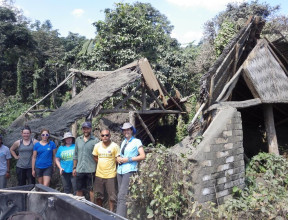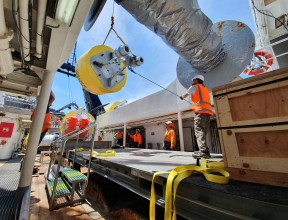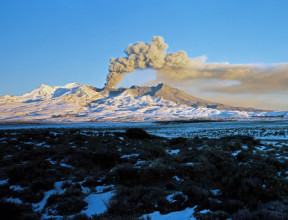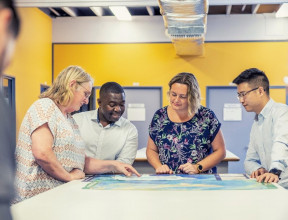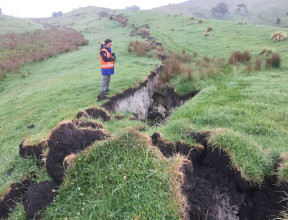
Community Resilience
GNS Science researchers work to support communities to build resilience to natural hazard risk through social science research, hazard and risk modelling, planning and policy reform.
Resilience, the goal of hazard research
The end goal of natural hazard research is to help communities build resilience. According to the National Disaster Resilience Strategy by the National Emergency Management Agency (NEMA), resilience is the ability to anticipate and resist disruptive events, minimise adverse impacts, respond effectively, maintain or recover functionality and adapt in a way that allows for learning and thriving. Hazards research seeks to understand, at a suitably granular scale, the strengths and vulnerabilities of communities and the economy. By involving communities in our hazard research, we better understand how to collectively improve resilience.
A critical success of GNS Science’s natural hazards and risks research over the past two decades has been how we have applied social science and people-centred approaches to enable, empower and support communities to build resilience. We work to deliver research that supports the aspirations of communities to increase their resilience. We also work to understand how natural and built environments respond to the impacts of different hazards – and then how we can better manage natural hazards and risks.
Young Curious Minds investigate Natural Hazards in New Zealand
-
Social Science
Existing inequities may be exacerbated during and after a hazard event. However, we also have examples of communities that are able to recover rapidly and thrive. Our multi-disciplinary team uses a range of social science methods and frameworks to better understand the needs, challenges and enablers for individuals, whānau, communities and stakeholders as well as influences on their decision-making. The communication of hazards and risks is a crucial component for better preparing communities for hazard events.
Our team has conducted research on diverse topics including preparedness, mitigation, response behaviour and decision-making; communication and visualisation of hazard, impact, and risk information; forecast and warning systems; evacuation dynamics; and education. We use a range of methods for our research, including interviews, surveys, hui and focus groups. We also work across all geological and hydrometeorological hazards.
Examples of current research activities include:
- Communication of forecasts, warnings and maps
- Understanding user needs for hazard and impact information
- Community well-being research
- Flood and tsunami evacuation
- Kaupapa Māori research
-
Hazard modelling
Hazard modelling provides a prediction for future hazard events based on observations of past events. We represent the physical components of a study area digitally to illustrate the extent and intensity of natural hazard events. Our team can identify existing areas that are vulnerable and areas to avoid when considering new developments or relocating communities after a disaster.
In New Zealand, our natural hazards include earthquakes, landslides, tsunami and volcanoes. We have modelled diverse scenarios for these hazards in New Zealand, Australia, Japan, Mexico, Turkey, Spain, Peru, Mongolia, Hong Kong, Indonesia, Vietnam, the Philippines and the USA.
Current projects that we lead or contribute to include:
-
Risk modelling
Natural hazards can cause damage to the built environment as well as the economy and human health. We use large-scale computing clusters and scientific databases to estimate and analyse the risks of future economic loss and social impacts from natural hazard scenarios. Modelling allows emergency management, local authorities, engineers and others to better manage natural hazard risks, plan hazard response, prepare communities, and develop warning and evacuation systems where appropriate.
We combine loss modelling results with the likelihood that an event would occur to get a complete view of risk. The models we use can be scenario-based or probabilistic to more effectively understand the uncertainty associated with natural hazard events. Since there is no way of knowing the exact nature of a natural hazard event and the exact damage it will cause, we focus on the probability – or likelihood – of loss from a natural hazard event.
Our team is skilled at assessing multi-hazard events. For example, if an earthquake then causes a tsunami or landslides, we can provide the full picture of likely damage – economic loss, injuries and deaths – for complex multi-hazard scenarios. We draw on event scenarios and probabilistic risk assessments that take into account the built environment and population demographics.
Risk modelling projects:
-
Building community resilience
We combine physical science knowledge with social science methodologies and methods to support community resilience for natural hazard events. We achieve this through understanding why communities are able to withstand the consequences of a natural hazard event, as well as understanding the local, regional and national factors (physical, political and social) that influence each community. Collaborators include iwi, hapū, communities, emergency managers, central and local government, Crown Research Institutes, universities, consultancies and private industry.
Our resilience activities and services include:
Policy: We ensure that our science is communicated, understood and appropriately implemented into new policy. When considerable legislative change is undertaken related to natural hazards, we ensure changes are supported by up-to-date science.
Land-use planning: We provide information and guidance for effective land-use planning and recovery planning in hazard prone areas. We also help incorporate risk-based land-use planning into district plans.
Emergency management and planning: We contribute to the development and review of natural hazard management plans, evacuation plans and Civil Defence Emergency Management Plans. Our research delivers improved resilience outcomes across the 4 R’s (readiness, response, recovery and reduction) in both New Zealand and internationally.
Hazard awareness education: We collaborate with communities to understand preparedness and responses to natural hazards, identify gaps and design educational strategies to meet the needs of communities, businesses and schools.
Kaupapa Māori research: We partner with iwi, hapū, marae and other Māori organisations to better understand the challenges and opportunities that natural hazards present for whānau and how tangata whenua are reducing risk.
Community participation and engagement: We investigate what risk reduction and response measures community groups have initiated and co-design ways to engage communities in natural hazard monitoring and risk reduction.
Communication of science advice: We conduct multi-disciplinary research to better understand how forecasts, warnings, maps and science advice can be better communicated. This helps to support decision-making to mitigate risk and build resilience.
Resilience projects and programmes we lead or contribute to include:
- East Coast LAB
- Resilience to Nature's Challenges (National Science Challenge)
- CASCADE
- Hazard & Risk Management programme
- MERIT
- GeoNet and event response
- Endeavour programmes
We collaborate with a range of organisations in the public and private sector to undertake the above activities and services either through research grants and contracts or through commercial services contracts, both in New Zealand and overseas. Contact us if you would like our help to increase resilience in your community or sector.
-
Hazard monitoring
The data that underpins these activities are collected through monitoring our natural hazards. GNS conducts on-site monitoring activities and owns and operates an extensive network of remote monitoring instruments, called GeoNet. GeoNet collects data related to earthquakes, landslides, tsunami and volcanoes, giving us extensive information to leverage in all our modelling activities.
